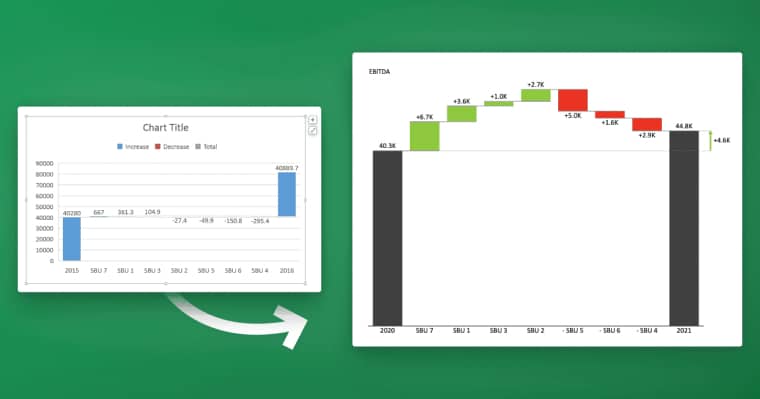Microsoft PowerPoint is one of the most widely used presentation software in the world. It allows you to create captivating and professional-looking presentations by adding text, images, and animations. One essential feature that can help improve the look and functionality of your presentation is the footer. In this article, we will discuss how to add a footer to your PowerPoint presentation, why it is important, and how to customize it.
Table of Contents
Why Adding a Footer is Important for Your PowerPoint Presentation
Adding a footer to your PowerPoint presentation can provide several benefits. Firstly, it helps to keep your presentation organized by displaying important information such as page numbers, the date, and time. It also serves as an additional tool for branding your presentation since you can add your company name or logo to the footer. Furthermore, it helps you maintain a professional look throughout the presentation by keeping it consistent with your brand guidelines.
Another benefit of adding a footer to your PowerPoint presentation is that it can help your audience follow along with your presentation more easily. By including page numbers, your audience can easily refer back to previous slides or take notes on specific points in your presentation. Additionally, including the date and time can help your audience keep track of when the presentation was given, which can be important for future reference or follow-up discussions.
The Different Sections of a PowerPoint Footer
A PowerPoint footer consists of three parts: the left section, the center section, and the right section. The left section usually contains the page number, while the center section contains the presentation title or a customized message, and the right section contains the date and time.
It is important to note that the footer can be customized to fit the needs of the presenter. For example, the left section can be used to display the presenter’s name or the name of the organization. The center section can also be customized to display a logo or an image that is relevant to the presentation.
Additionally, the footer can be used to display important information throughout the entire presentation. This can include contact information, website URLs, or even a call to action. By utilizing the footer in this way, presenters can ensure that their audience has access to important information at all times during the presentation.
How to Customize the Appearance of Your Footer
Customizing the appearance of your PowerPoint footer can add a personal touch to your presentation. To customize your footer, first, navigate to the Insert tab on the PowerPoint ribbon and select Header & Footer. In the Header and Footer dialog box, select the Slide tab, and you will see the Footer section. Here, you can choose the format, font size, and style of your footer. You can also customize the text in each section to your preference.
Another way to customize your footer is by adding images or logos. To do this, click on the “Insert Picture” button in the Footer section of the Header and Footer dialog box. You can then browse your computer for the image you want to use and insert it into the footer. You can also adjust the size and position of the image to fit your preferences.
It’s important to note that when customizing your footer, you should keep in mind the overall design and theme of your presentation. Your footer should complement the rest of your slides and not distract from the main content. Additionally, make sure that the text in your footer is legible and easy to read, especially if you are using a smaller font size.
Adding Text and Images in Your PowerPoint Footer
You can add text, images, or shapes to your PowerPoint footer to make it more informative and visually appealing. To do this, select the Placeholder icon on the Slide tab in the Header and Footer dialog box. You can then add any desired text, images, or shapes to the footer sections.
Adding text and images to your PowerPoint footer can also help reinforce your branding and make your presentation more professional. You can include your company logo, website URL, or social media handles in the footer to increase brand recognition and make it easier for your audience to connect with you.
Another benefit of adding information to your PowerPoint footer is that it can help with accessibility. By including important details such as the date, slide number, or presenter name in the footer, you can make your presentation more accessible to individuals with disabilities who may be using assistive technology to navigate your slides.
How to Add Page Numbers to Your PowerPoint Presentation Footer
Adding page numbers to your PowerPoint footer is a straightforward process. Simply select the Slide tab in the Header and Footer dialog box, and check the box for Slide number. You can choose where to display the page numbers, either in the left, center or right section of the footer.
It is important to note that adding page numbers to your PowerPoint presentation can help your audience keep track of where they are in the presentation. This is especially useful for longer presentations that may span multiple slides.
In addition to page numbers, you can also add other information to your PowerPoint footer, such as the date, time, or the name of the presentation. This can be done by selecting the appropriate options in the Header and Footer dialog box.
Adding Date and Time in Your PowerPoint Footer
Adding the date and time to your PowerPoint footer can help keep your presentation updated and relevant. To do this, select the Slide tab in the Header and Footer dialog box, and check the boxes for Date and Time. You can choose where to display the date and time, either in the left, center, or right section of the footer.
It is important to note that the date and time will automatically update in your PowerPoint presentation, so you don’t have to worry about manually changing it. This is especially useful if you are presenting to a large audience or if your presentation spans over multiple days.
In addition to adding the date and time, you can also include other information in your PowerPoint footer, such as the name of your company or organization, the title of your presentation, or the page number. This can help to give your presentation a more professional and polished look.
Creating a Consistent Look for Your PowerPoint Presentation Footer
Creating a consistent look for your PowerPoint footer can help to enhance the overall branding of your presentation. To achieve a consistent look, ensure that your footer follows your brand guidelines, such as using specific colors or fonts. You can also choose to use the same footer layout and design throughout the presentation.
Another way to create a consistent look for your PowerPoint footer is to include the same information on every slide. This could include your company name, logo, and contact information. By doing this, your audience will always know who the presentation is from and how to get in touch with you.
It’s also important to make sure that your footer doesn’t distract from the main content of your presentation. Keep it simple and unobtrusive, so that it doesn’t take away from the message you’re trying to convey. A well-designed footer can enhance your presentation, but an overly complicated or distracting one can detract from it.
Tips and Tricks for Using Footers in PowerPoint Presentations
Here are some tips and tricks to consider when using footers in PowerPoint presentations:
- Ensure that fonts and sizes used in the footer match your presentation’s overall design.
- Do not use too much text in the footer sections; instead, keep it short and concise.
- Add your contents or project names to the left or center sections of the footer; this helps to keep the audience informed about the presentation topic.
- Use appropriate colors and designs for your footer, keeping in mind the branding guidelines.
- Keep in mind that having too much text on the footer can be distracting to your audience.
Another important tip to consider when using footers in PowerPoint presentations is to ensure that they are consistent throughout the presentation. This means that the same font, size, and design should be used for all footers in the presentation. This helps to create a cohesive and professional look for your presentation.
Additionally, you can use footers to include important information such as contact details, website links, or social media handles. This can be especially useful if you are presenting to a large audience or if your presentation will be shared online. Just make sure that the information you include is relevant and adds value to your presentation.
Troubleshooting Common Issues with Powerpoint Footers
Issues may arise when adding footers to your PowerPoint presentation. If you encounter problems, one of the solutions is to check if there are any conflicting settings in your footer. Another solution might be to update your PowerPoint software. In some cases, the problem might be an issue with the software or the footer itself, and it might require some expert help.
In conclusion, adding a footer to your PowerPoint presentation can make it look more professional and informative. Through customization, you can tailor your footer to meet your branding guidelines and provide valuable information to your audience. Incorporating these tips and tricks can enhance the overall look of your presentation and make it more engaging to your audience.
However, it is important to note that adding too much information to your footer can be overwhelming for your audience. Keep it simple and concise, and only include the most important information. Additionally, make sure that your footer is consistent throughout your presentation, with the same font, size, and color scheme.
Lastly, if you are presenting in a different language or to a multilingual audience, make sure to translate your footer accordingly. This shows respect for your audience and can help them better understand the information presented in your presentation.














